The Weird of Oz Gabs About Groundhog Day
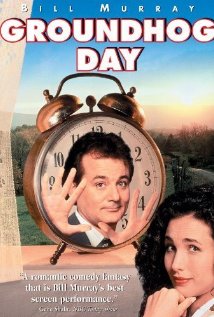 In this day-after-Groundhog-Day edition of “The Weird of Oz,” I’ll consider how — and why — the 1993 film Groundhog Day has quietly joined the ranks of American classics.
In this day-after-Groundhog-Day edition of “The Weird of Oz,” I’ll consider how — and why — the 1993 film Groundhog Day has quietly joined the ranks of American classics.
First, let me quickly situate this film with regard to how it warrants discussion on a website devoted to fantasy media (an interesting issue David E. Harris raised in his post of December 26, 2012). Although billed as a comedy, and by no means a traditional fantasy or supernatural tale, it does fall under the umbrella of speculative fiction.
Tolkien, in his essay “On Fairy-Stories,” noted that all imaginative fiction begins by posing a question: “What if?” He offers the example of someone imagining a green sun: “To make a Secondary World inside which the green sun will be credible, commanding Secondary Belief, will probably require labour and thought, and will certainly demand a special skill, a kind of elvish craft.”*
How would the world be different given the changed variable(s)? The “what if” question puts the speculative into speculative fiction. What if ghosts are real? What if werewolves existed? What if a ghost, a werewolf, and a vampire shared a flat? What if corpses began rising from the dead? What if an alien lord traveled through time and space in a British police call box?
Groundhog Day’s premise is that the protagonist wakes one morning to discover the day he just lived is repeating itself. What if a person were caught in a time loop so that he kept living the same day over and over, never aging yet retaining all his memories?
The film, which celebrates its twentieth anniversary this month, has affected the popular vernacular and entered our collective frame of reference. Specifically, it has added a new association to Groundhog Day the holiday. Groundhog Day is now used in popular culture as shorthand for being stuck in a repetitive situation. This concept has become so ubiquitous that even people who never saw the film get the point. One recent typical example is a TV ad for Sonic, in which two men are sitting in their car chowing down on Sonic burgers. They mention the holiday and how tasty the burgers are, then keep repeating the same snippet of dialogue. The movie is never referenced, but it does not need to be. The transference from film to holiday has stuck.
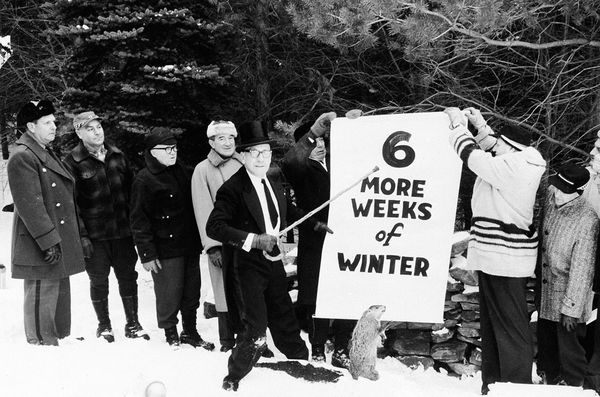 What is particularly interesting about this is that prior to the film there was, at best, a tenuous connection between the holiday and any concept of being stuck on “Repeat Play,” in that the groundhog’s reaction to his shadow could be predictive of another six weeks of winter (but not the same six weeks of winter). In other words, Groundhog Day was about a possible extension, not a repetition. A fine distinction, perhaps, but it’s there. Any characterization in terms of the latter owes to the movie.
What is particularly interesting about this is that prior to the film there was, at best, a tenuous connection between the holiday and any concept of being stuck on “Repeat Play,” in that the groundhog’s reaction to his shadow could be predictive of another six weeks of winter (but not the same six weeks of winter). In other words, Groundhog Day was about a possible extension, not a repetition. A fine distinction, perhaps, but it’s there. Any characterization in terms of the latter owes to the movie.
That it has had such an impact on the collective imagination is largely due to what a good movie it is, from the script to the acting to the editing. In 2000, the American Film Institute (AFI) ranked it 34 on its list of 100 Movies…100 Laughs. Although it broke the top fifty for American comedies, what is more interesting for our discussion is that in 2008, AFI named it one of the top ten American fantasy films (it got the number 8 slot, with The Wizard of Oz coming in first). Incidentally, AFI defines fantasy “as a genre where live-action characters inhabit imagined settings and/or experience situations that transcend the rules of the natural world.”
A quick recap: TV weatherman Phil Connors, played by Bill Murray, is anything but thrilled when he’s assigned to cover the annual groundhog-day festivities in Punxsutawney, PA, which he sees as being beneath him. Equally irritating to him is his too-sunny producer Rita, played by Andie MacDowell, and his cameraman Larry, played by Chris Elliott (who, granted, just about anyone might find irritating). He gets the shots, calls it a wrap, and can’t put the other Phil (Phil the groundhog) behind him fast enough, when a freak blizzard puts the kibosh on his plans. He thinks he’s just staying in town for the night, but awakens the next morning to a serious case of déjà vu. He is, in fact, in town for the same day and night, again and again (for at least 10 years! – and, according to co-scriptwriter and director Harold Ramis, perhaps far longer).
Scriptwriters Danny Rubin and Ramis take the premise and really squeeze every drop of juice from it, cleverly working out the interior logic of such a scenario and its ramifications for the protagonist. Murray’s character goes through every phase one could imagine — boredom, exploitation, suicidal angst, heroism, and eventually a sort of resigned wisdom. The day does not change, but the character does dramatically.
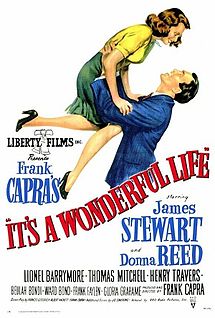 As the director, Ramis allows the material to breathe; its pacing is comparable to a good Frank Capra film, and indeed it is not out of place alongside classics like It’s a Wonderful Life (which famously poses another “what if” question — what if you never existed?). Unlike It’s a Wonderful Life, which introduced an angel to set the plot twist in motion, Groundhog Day eschews any such MacGuffin as explanation for the time anomaly. Is it supernatural? Is it a warp in the space-time continuum affecting only one man? Doesn’t really matter here, and the film is stronger, I think, for avoiding any half-hearted attempt to rationalize it.
As the director, Ramis allows the material to breathe; its pacing is comparable to a good Frank Capra film, and indeed it is not out of place alongside classics like It’s a Wonderful Life (which famously poses another “what if” question — what if you never existed?). Unlike It’s a Wonderful Life, which introduced an angel to set the plot twist in motion, Groundhog Day eschews any such MacGuffin as explanation for the time anomaly. Is it supernatural? Is it a warp in the space-time continuum affecting only one man? Doesn’t really matter here, and the film is stronger, I think, for avoiding any half-hearted attempt to rationalize it.
The filmmakers allow all the possibilities to play out organically; nothing seems forced. And despite the patient pacing, I never feel like I am myself trapped in a repetitive routine watching it unfold. Each day offers a new turn of the plot, dependent wholly on the actions of the one character who exercises free will on a day that has already occurred like clockwork hundreds of times before.
It is a fascinating character study; it is also damned funny. Murray is at the top of his game here. He begins as a cheeky, arrogant jerk who is nonetheless hilarious, and he ends as a well-rounded, empathetic guy who is still interesting and, well, hilarious. Frankly, Murray deserved an Oscar nomination for this one. It is a showcase for why he is one of America’s great deadpan comics as well as an actor who brings a mesmerizing humanity to his roles.
The inevitable relationship with MacDowell’s character also pays off — the chemistry between Phil and Rita is believable, adding a nice romantic touch that, rather than coming off as schmaltzy, actually serves as a real driver in the plot (so it’s also a romcom — and just over a week before that other big February holiday).
So, it is smart, witty, romantic, funny… There is one further element that I believe contributes to its appeal: a bit of fantasy wish fulfillment. Obviously, if one were doomed forever to repeat the same day, that would be a pretty horrifying prospect, but not if it were only a temporary time glitch, as proves to be the case for Connors. What would we do if we suddenly had several years to live while only burning up a single day?
Become fluent in a second language? Check. Become proficient with a musical instrument? Check. Catch up on the piles of books we’ve been meaning to read? Check. Learn everything we can about a person we’re attracted to in order to better woo her? Phil Connors, of course, does all these things and more. In an age when the lament “There aren’t enough hours in the day” is cliché, having a few years worth of hours in a day would solve that dilemma handily, allowing us to fulfill those plans we always meant to pursue but just ran out of time for. What if the hourglass was, for a while, tipped sideways, suspending that inexorable dwindling of sand, allowing us to turn some of those pipe dreams into viable goals?
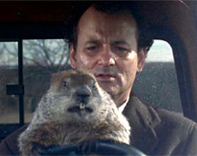 Groundhog Day is a personal favorite of mine, and a film I’ve long deemed a true American classic. Despite initial lukewarm reception, many film critics and historians are catching up in recognizing it as a masterpiece (see the “Reception” section on Wikipedia for copious examples of how this film’s stock has risen in recent years, including preservation in the Library of Congress in 2006). I’ll be happy to hit “play” and repeat the experience. Especially if we’re in for another six weeks of winter.
Groundhog Day is a personal favorite of mine, and a film I’ve long deemed a true American classic. Despite initial lukewarm reception, many film critics and historians are catching up in recognizing it as a masterpiece (see the “Reception” section on Wikipedia for copious examples of how this film’s stock has risen in recent years, including preservation in the Library of Congress in 2006). I’ll be happy to hit “play” and repeat the experience. Especially if we’re in for another six weeks of winter.
* Tolkien’s concept of “secondary belief” is an analogue of Coleridge’s more familiar “suspension of disbelief.” In other words, once the author or filmmaker has altered in some way reality as we know it, he/she must somehow draw us into and through the story — getting us to invest in it, rather than to toss it aside (or storm from the theater) with the objection “But this is ludicrous!”
Odds ‘n Ends
Groundhog News Update: Punxsutawney Phil did not see his shadow yesterday, so spring is on its way!
When I told a friend I was going to write about Groundhog Day on the day after Groundhog Day, he said I should share my little groundhog anecdote. So, okay. As a part-time tour guide in Minnesota, I often spot furry brown creatures cavorting on the grass at a nature preserve, especially on summer mornings. Timid creatures, they are quick to scurry back into their burrows, affording just enough of a glimpse to describe them as a bit like beavers without the beaver tail (or a bit like naked ewoks scampering on all fours to escape an Imperial AT-ST walker — Star Wars fans, you’re welcome). Now, I could never remember if they were groundhogs or woodchucks: sometimes I would point them out to my guests as groundhogs, sometimes as woodchucks, in either case hoping I was not misidentifying the animal. Well, finally I got my hands on a field guide to MN mammals and discovered — lo and behold, a groundhog is a woodchuck. Two different names for the same animal, Marmota monax (the field guide noted they are also known as whistle-pigs, a term I have never heard in my life). So if, rather than asking “How much wood would a woodchuck chuck if a woodchuck could chuck wood?”, you instead asked, “How much ground would a groundhog hog if a groundhog could hog ground?” you would be asking both nonsensical questions about the very same creature.
Finally: In last week’s Odds ‘n Ends, I said I would explain the title of this blog. For those of you who stuck with me through the groundhog anecdote, here it is…
The esteemed publisher and editor of Black Gate John O’Neill suggested a play on my name with “Oz the Wizard,” as in “Oz the Wizard Looks at Arak, Son of Thunder.” Never one to shy away from such wordplay, I resolved to use the Oz angle but decided to hew more closely to the syntax of L. Frank Baum’s book titles.
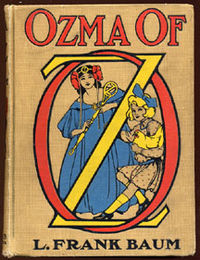 I didn’t want to go with “The Wizard of Oz,” though – too many blogs out there have used that already. Also, admittedly, it felt a tad presumptuous. “Oz the Wizard” was no problem since it’s not exclusive — it suggests I am a “wizard,” sure, but one among many, just as you might say “This is Bill the mail carrier” without the misapprehension that Bill is the only mail carrier. The Wizard of Oz, on the other hand — such hubris would surely be exposed, as soon as the first terrier came along and pulled back my curtain.
I didn’t want to go with “The Wizard of Oz,” though – too many blogs out there have used that already. Also, admittedly, it felt a tad presumptuous. “Oz the Wizard” was no problem since it’s not exclusive — it suggests I am a “wizard,” sure, but one among many, just as you might say “This is Bill the mail carrier” without the misapprehension that Bill is the only mail carrier. The Wizard of Oz, on the other hand — such hubris would surely be exposed, as soon as the first terrier came along and pulled back my curtain.
Baum used the formula “X of Oz” to title all of the books he wrote in the series, so all I had to do was think of something unique to insert. My best friend in high school gave me the nickname “The Weird” (can’t imagine why), so voila! There you have it, my friends. I’ll have more weirdness for you next week. Enjoy the Super Bowl.
When Groundhog Day used to show on whatever specialty movie channel we had, I saw it so many times I would sometimes stop watching what I had on, flip to that channel, catch the bit of Groundhof Day I wanted to see, and switch back.
All I needed to know was the start time of it, and I was golden…